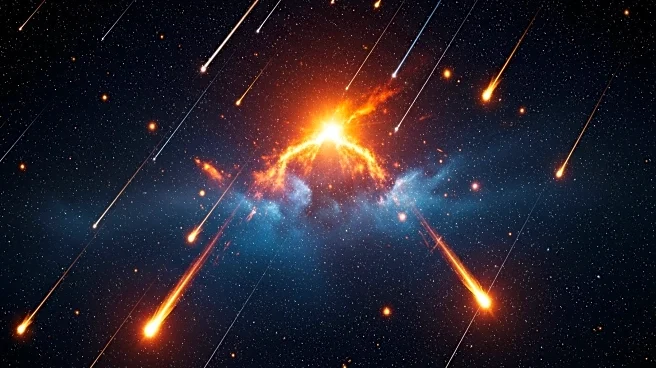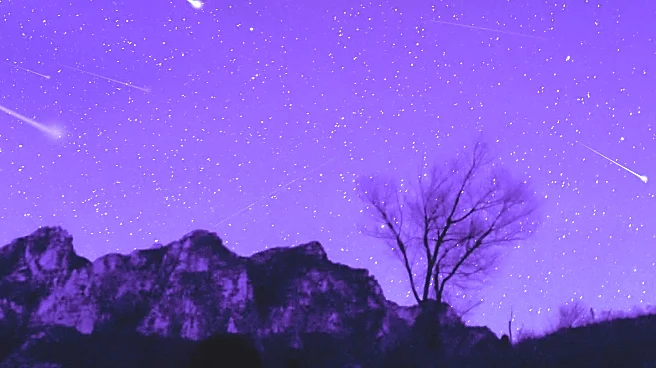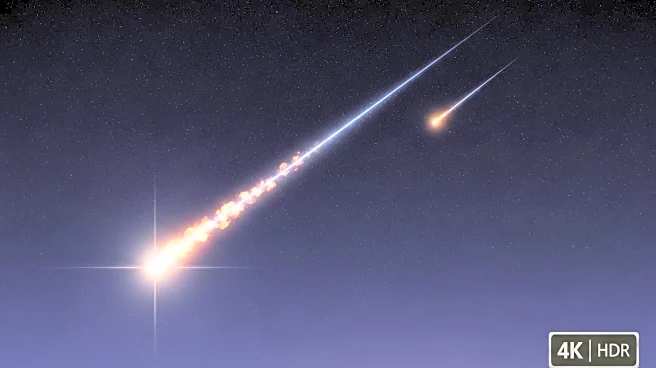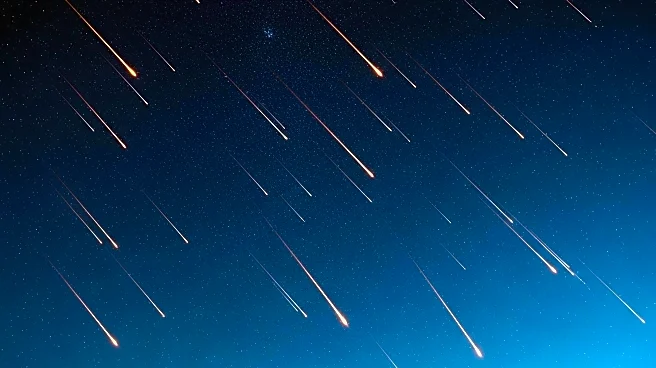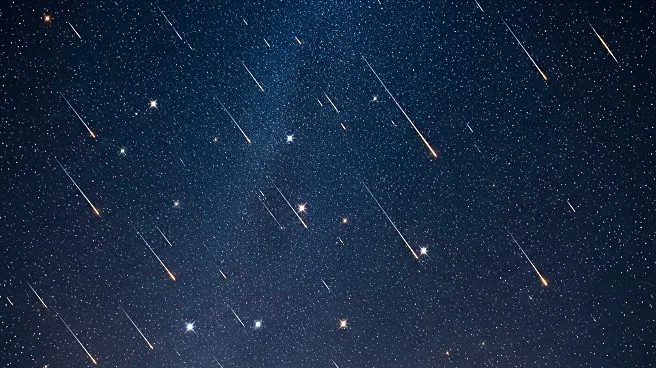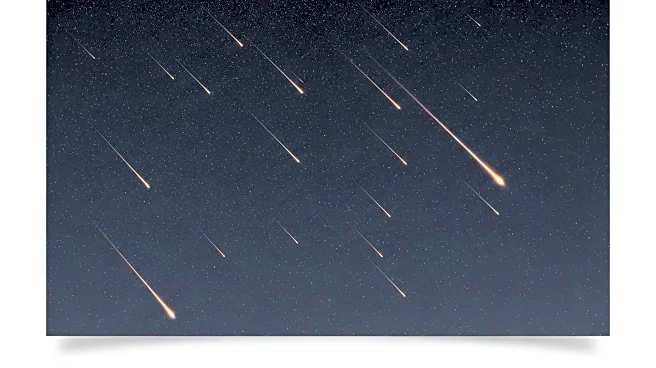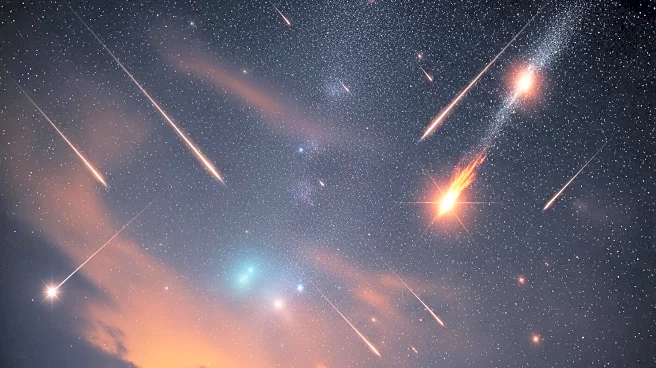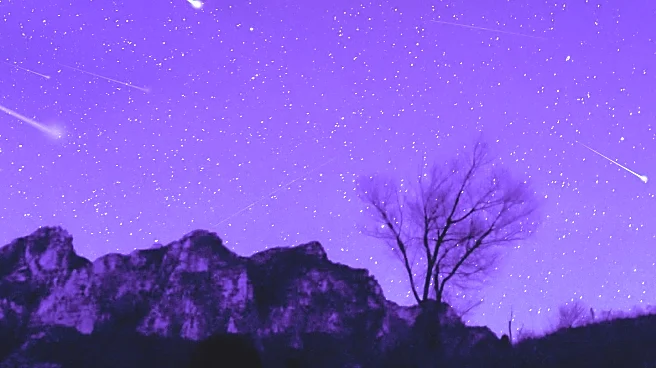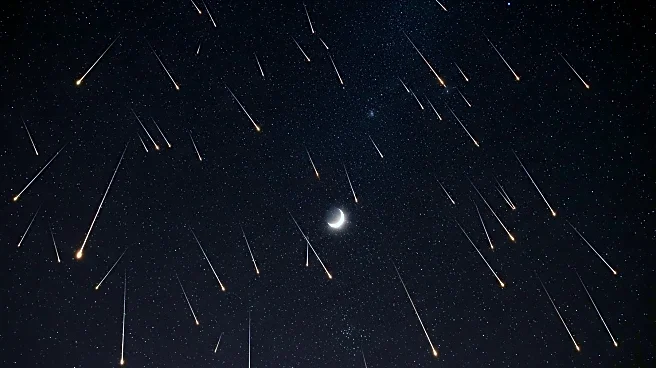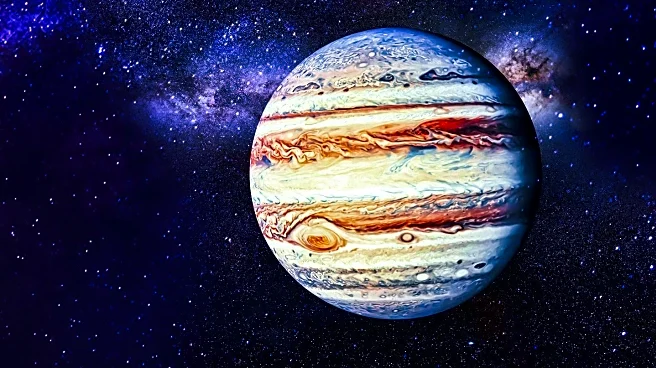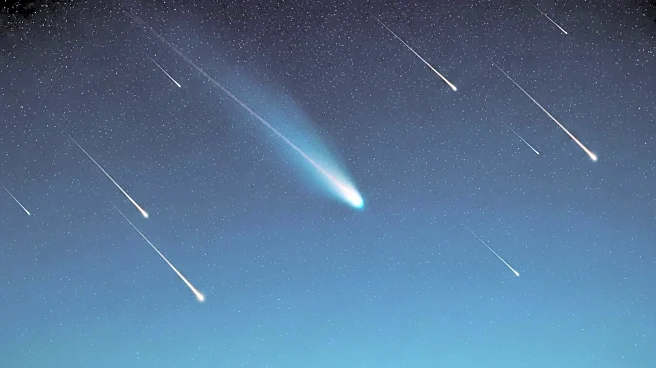What's Happening?
The Taurid meteor showers, consisting of the Southern Taurid and Northern Taurid showers, are set to peak in the coming weeks. The Northern Taurids will become active on October 20 and peak on November
11, while the Southern Taurids have been active since September and will peak on November 4. These showers are caused by debris from comet 2P/Encke burning up in Earth's atmosphere, creating visible shooting stars. Under ideal conditions, observers can see up to five meteors per hour, with the potential for bright fireballs that illuminate the night sky.
Why It's Important?
The Taurid meteor showers provide a captivating celestial event for stargazers and astronomers. The occurrence of fireballs, which are unusually bright meteors, offers a unique spectacle that can engage the public and promote interest in astronomy. For scientists, the showers present an opportunity to study meteor activity and its effects on Earth's atmosphere. The event also highlights the importance of dark sky locations for optimal viewing conditions, emphasizing the need to reduce light pollution.
What's Next?
As the Taurid meteor showers approach their peak, astronomers and enthusiasts will continue to monitor weather conditions and cloud coverage to ensure optimal viewing. Observatories and astronomy clubs may organize viewing events and provide guidance on how to observe the showers. The showers' activity will be tracked to predict the best times and locations for viewing. Educational programs may be developed to inform the public about meteor showers and their significance in astronomy.
Beyond the Headlines
The Taurid meteor showers underscore the importance of preserving dark sky locations and reducing light pollution for astronomical observations. The event also highlights the role of observatories and astronomy organizations in promoting public interest in space science. The occurrence of fireballs may inspire future generations to pursue careers in astronomy and related fields, contributing to scientific advancements and exploration.
